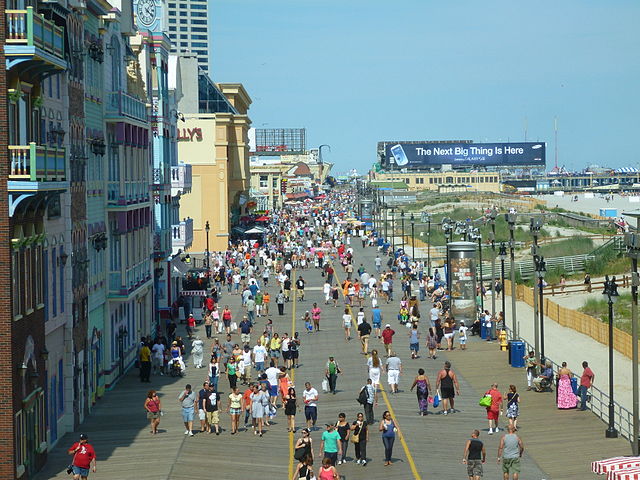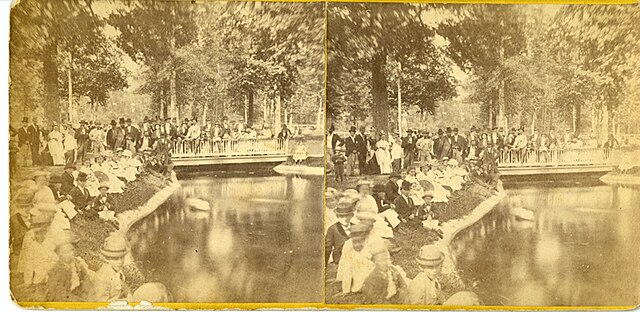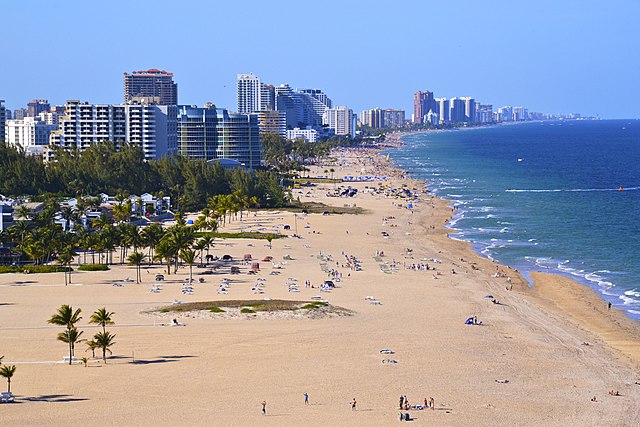An esplanade or promenade is a long, open, level area, usually next to a river or large body of water, where people may walk. The historical definition of esplanade was a large, open, level area outside fortress or city walls to provide clear fields of fire for the fortress's guns. In modern usage, the space allows the area to be paved as a pedestrian walk; esplanades are often on sea fronts and allow walking whatever the state of the tide, without having to walk on the beach.
The Atlantic City, New Jersey boardwalk esplanade, as seen from Caesars Atlantic City, opened in 1870, as the America's first boardwalk. At 5+1⁄2 miles (9 km) long, it is also the world's longest and busiest boardwalk. New Jersey is home to the world's highest concentration of boardwalk esplanades.
Central City Park, Macon, GA; May Day, 1876
Usedom, Western Pomerania, Germany - longest beach promenade in Europe (Ahlbeck here)
Pärnu's beach promenade, Pärnu County, Estonia
A beach is a landform alongside a body of water which consists of loose particles. The particles composing a beach are typically made from rock, such as sand, gravel, shingle, pebbles, etc., or biological sources, such as mollusc shells or coralline algae. Sediments settle in different densities and structures, depending on the local wave action and weather, creating different textures, colors and gradients or layers of material.
Recreational beaches, such as this one in Fort Lauderdale, Florida
St Oswalds Bay, Dorset, England. Wild sand and shingle beaches are shaped and maintained naturally by wave actions.
Marine debris on a beach in Hawaii.
Quartz sand particles and shell fragments from a beach. The primary component of typical beach sand is quartz, or silica (SiO2).








